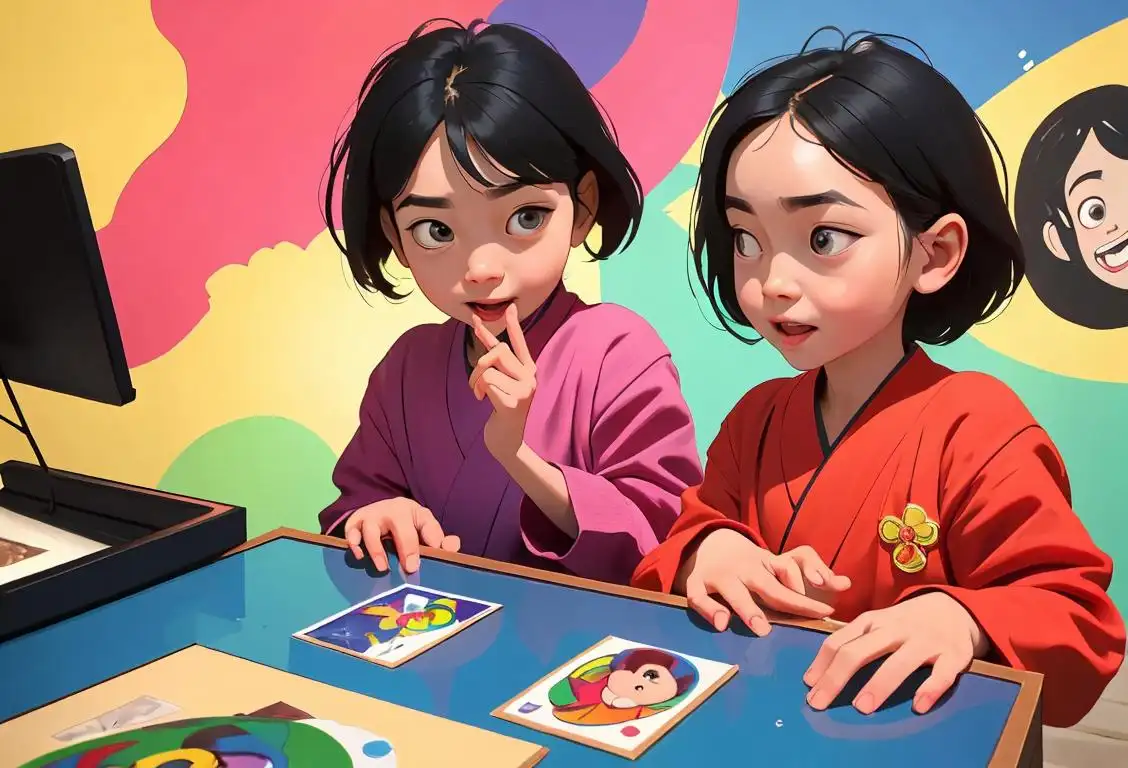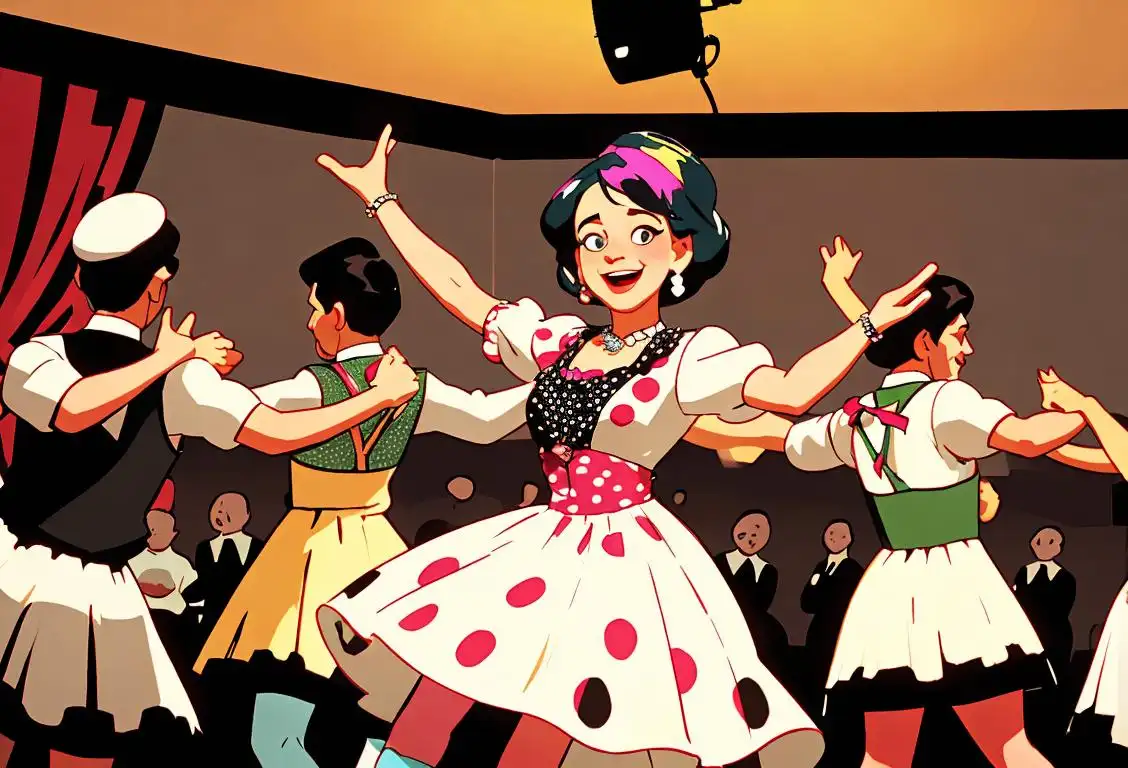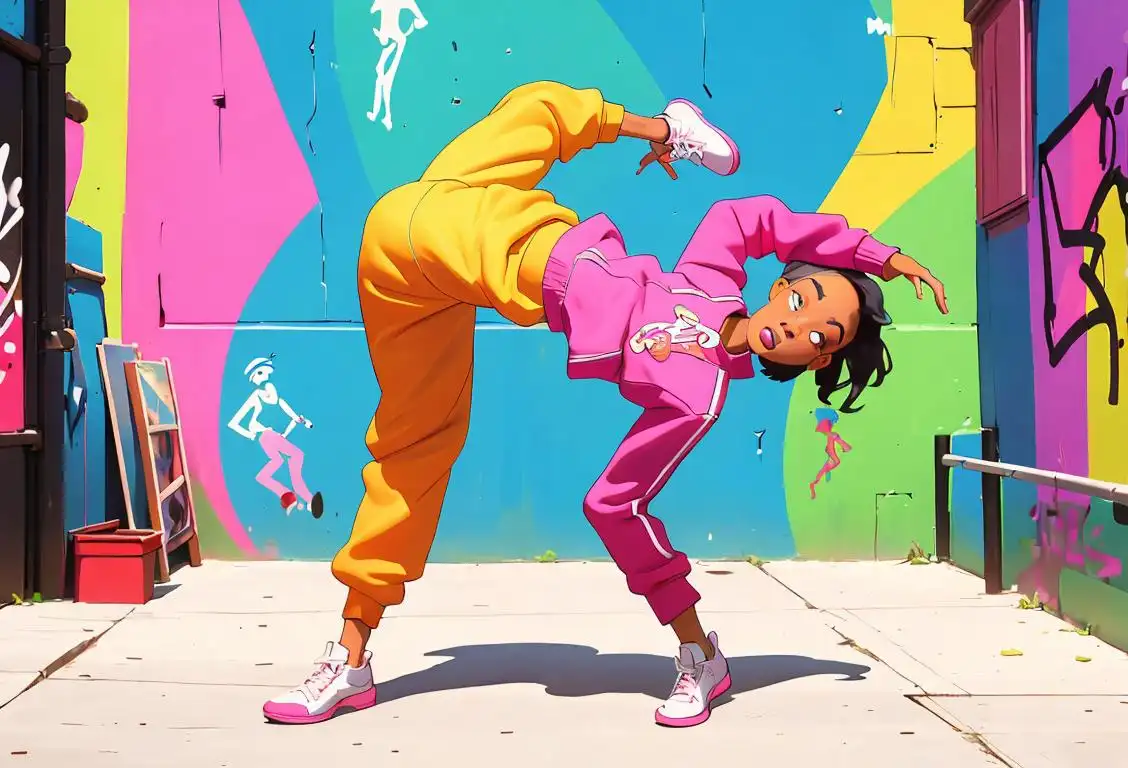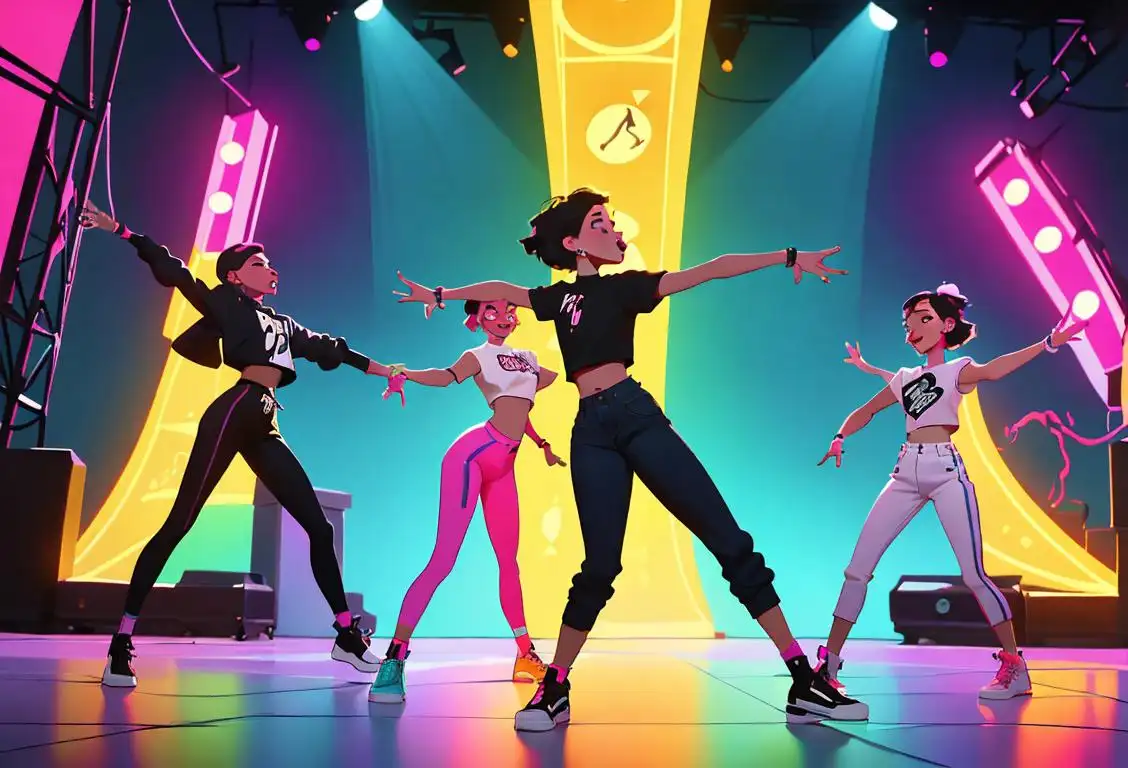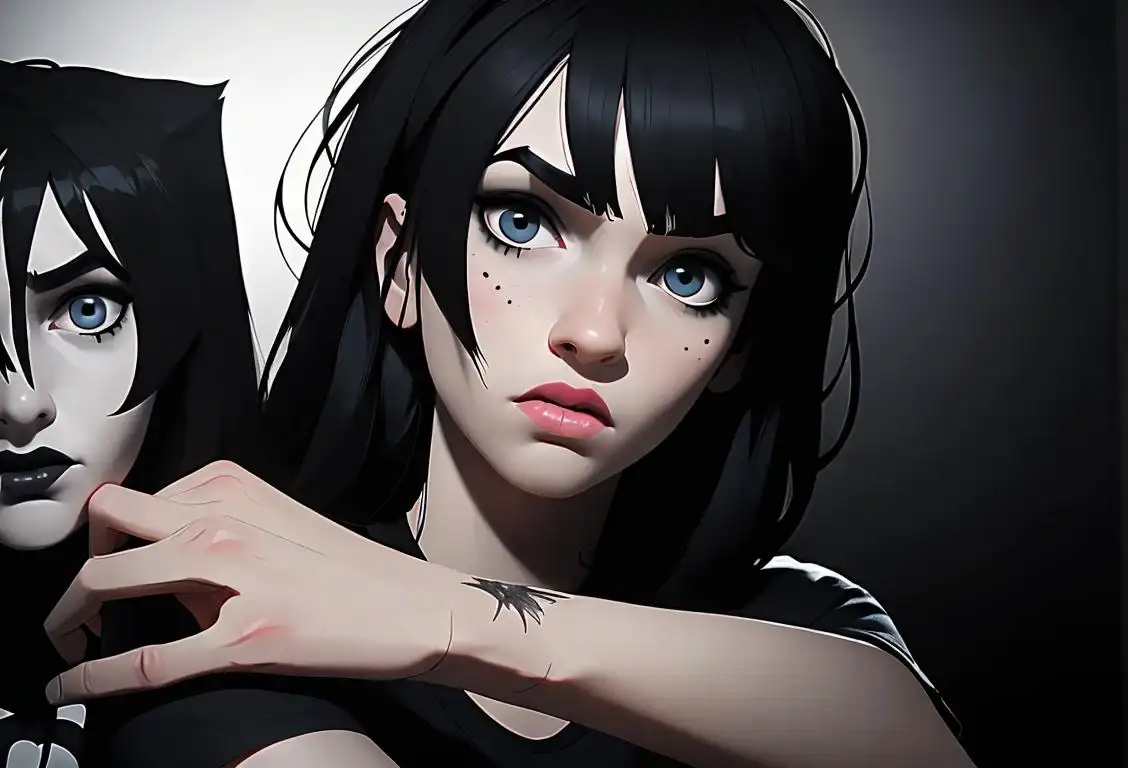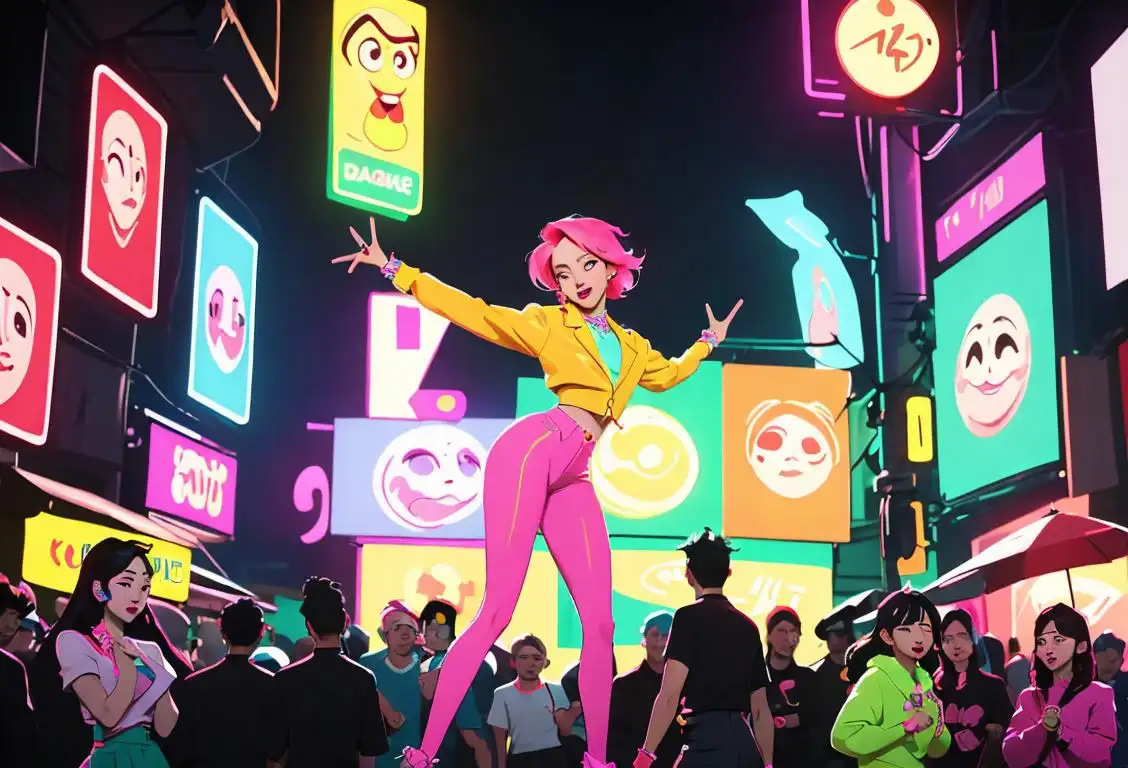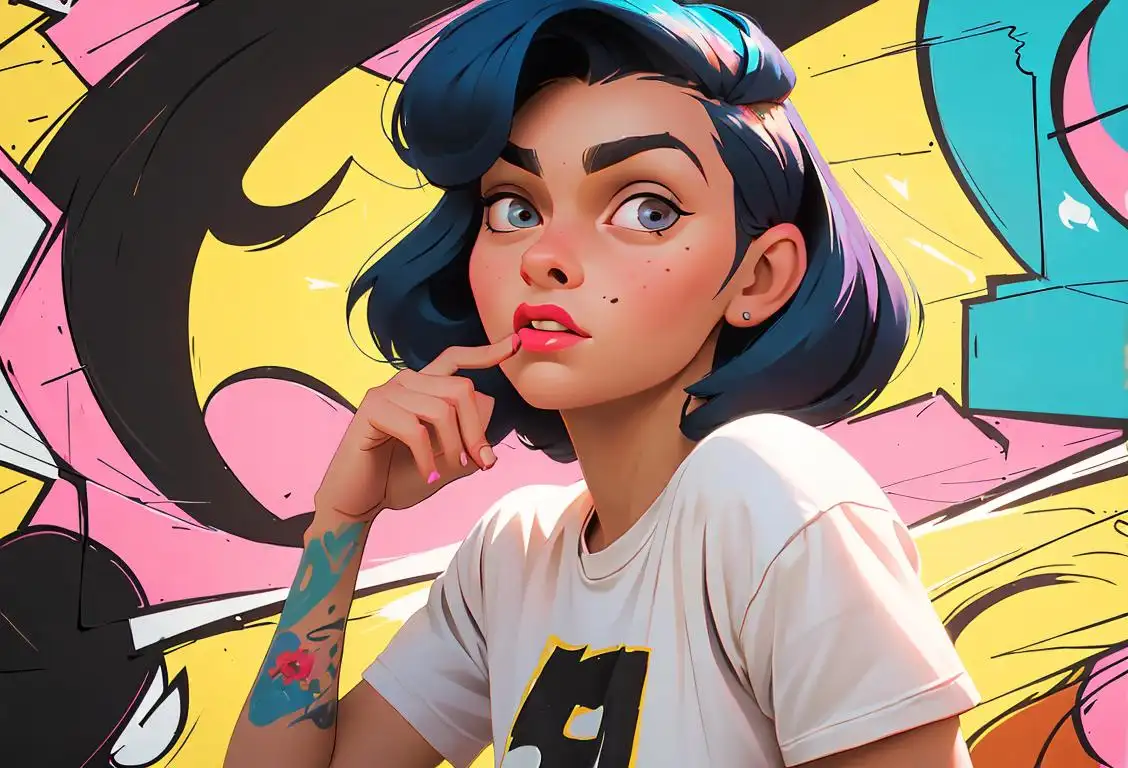National Hiphop Day
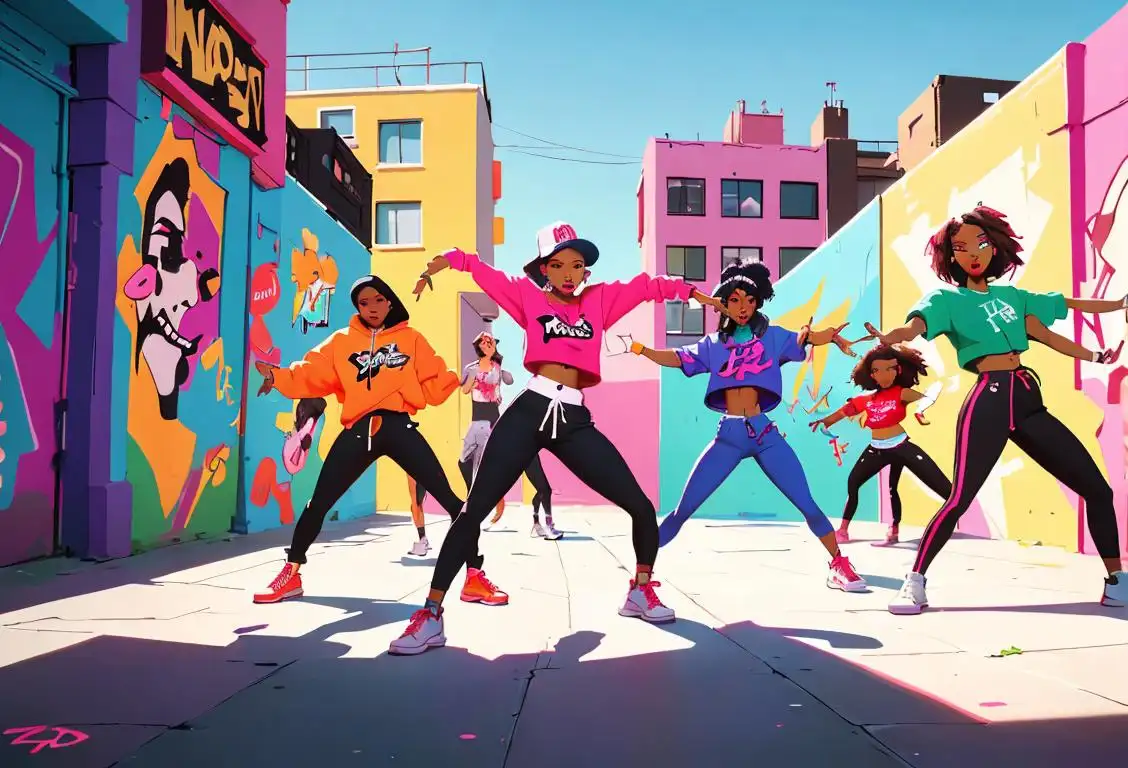
Greetings, fellow hip-hop enthusiasts! Did you know that there's a special day dedicated solely to the celebration of this incredible genre? Allow me to introduce you to National Hip-Hop Day!
When is Hiphop Day?
It's national hiphop day on the 15th August.
The Birth of Hip-Hop
Hip-hop, the unparalleled fusion of rhythm, rhyme, and style, emerged from the bustling streets of New York City in the 1970s. It was born out of the desire for self-expression and served as a voice for the underrepresented communities.
The exact origins of hip-hop are often debated, but most agree that it all started with DJ Kool Herc, a Jamaican-born artist who pioneered the technique of 'breakbeat' DJing. This innovative style involved isolating and repeating the 'breaks' of funk and soul records, creating a captivating rhythm that formed the backbone of early hip-hop tracks.
As time went on, hip-hop evolved into a cultural movement encompassing not only music but also elements like graffiti art, breakdancing, and fashion. It became a vibrant and influential force that resonated with people from all walks of life.
National Hip-Hop Day: A Celebration of Culture
National Hip-Hop Day is a joyous occasion that allows us to appreciate and honor the immense impact hip-hop has had on society. It's a day to celebrate the music, dance, art, and fashion that make hip-hop the vibrant and diverse culture it is.
Whether you're a long-time fan or just discovering the genre, National Hip-Hop Day provides the perfect opportunity to delve into the fascinating history, listen to iconic tracks, and dance to the infectious beats.
So, put on your best pair of sneakers, turn up the volume, and let the rhythm guide you as we pay homage to the genre that has revolutionized the music industry.
History behind the term 'Hiphop'
1969
Birth of Hip-Hop
Hip-hop, a cultural movement, emerges amidst the social and economic challenges faced by African-American and Latino communities in the South Bronx, New York City. The term 'hip-hop' is coined by African-American rapper Keith Cowboy during a performance with his group, The Furious Five.
1970
The Birth of a Culture
In the Bronx, New York City, in the early 1970s, a new cultural movement emerged that would revolutionize music and street style. This movement, known as hip-hop, was a response to the social and economic challenges faced by African-American and Latino youth in the inner city. It began with parties and block parties where DJs would mix and blend different genres of music, creating a unique sound that would become the foundation of hip-hop.
1970
The Birth of Hip-Hop
In the year 1970, hip-hop was born in the Bronx, New York City. It emerged as a cultural movement and musical genre among African-American and Latino youth. Originating at block parties and community gatherings, hip-hop encompassed elements of dance, music, graffiti art, and fashion. DJs such as Kool Herc and Grandmaster Flash played a crucial role in popularizing this new form of expression.
1970
Birth of Hip Hop
Hip hop emerged in the Bronx, New York City, during the early 1970s. It was a cultural movement that encompassed various art forms including music, dance, graffiti, and fashion. Initially, it was a localized phenomenon, with DJs mixing records and creating new beats at parties and community events.
1973
Birth of Hip-Hop
Hip-hop originated in the South Bronx, New York City in 1973. DJ Kool Herc was a Jamaican-born DJ who is credited with developing the foundational elements of hip-hop. He used two turntables to extend the instrumental part of songs, which became known as 'breaks'. This technique formed the basis of the mixing and scratching that are integral to hip-hop music.
1970
Birth of a Culture
Hip-hop emerged in the South Bronx of New York City during the early 1970s. It originated as a cultural movement encompassing music, dance, art, and fashion. DJs would mix records to create a continuous flow of music, and MCs (Master of Ceremonies) would rap over these beats, engaging the crowd with their lyrical skills.
1970
The Birth of Hip Hop
In the South Bronx, New York City, a new form of artistic expression was emerging. Jamaican-born DJ Clive "Kool Herc" Campbell is credited with hosting the first-ever hip hop party. He showcased his skills as a disc jockey by isolating instrumental breaks in popular songs and using two turntables to mix them together, creating a continuous flow of music perfect for dancing.
1973
Breakdancing Takes the Stage
In 1973, DJ Kool Herc organized a party where his sister, Cindy, started a dancing trend called 'breakdancing.' B-boys and B-girls would showcase their acrobatic moves, spinning on their heads and performing intricate footwork. Breakdancing quickly became one of the key elements of hip-hop culture, captivating audiences with its athleticism and creativity.
1979
First Hip-Hop Recordings
The Sugarhill Gang's record 'Rapper's Delight' becomes the first commercially successful hip-hop single, reaching the top 40 on the Billboard Hot 100 chart. This breakthrough establishes hip-hop as a viable genre and paves the way for its global expansion.
1979
Rapper's Delight
The year 1979 marked a pivotal moment in hip-hop history with the release of the Sugarhill Gang's hit single 'Rapper's Delight.' This song brought hip-hop into the mainstream, reaching a wider audience beyond its roots in the Bronx. 'Rapper's Delight' not only showcased the talent of rappers Big Bank Hank, Wonder Mike, and Master Gee but also solidified hip-hop's place in the music industry.
1973
MCs Take the Mic
At the age of 16, DJ Kool Herc's sister, Cindy Campbell, introduced the concept of emceeing (MCing) at a party. Emcees would use rhythmic speech and rhyme to engage the audience and keep the energy alive. This marked the introduction of the lyrical aspect of hip hop, adding a new layer of creativity and storytelling to the genre.
1973
Kool Herc and the Birth of Breakbeats
In 1973, Jamaican-American DJ Kool Herc revolutionized hip hop by introducing the concept of 'breakbeats.' He would isolate and loop the instrumental sections, or 'breaks,' of funk and soul records to create extended rhythmic sections that dancers could showcase their moves to. This technique became the foundation for DJing and provided new opportunities for MCs to rap over the beats.
1979
First Hip-Hop Record
The first hip-hop record to gain mainstream popularity was 'Rapper's Delight' by the Sugarhill Gang in 1979. This song popularized hip-hop music beyond the local Bronx community and introduced it to a worldwide audience. 'Rapper's Delight' showcased the lyrical skills and energetic delivery that would become integral to hip-hop culture.
1973
The Rise of the DJ
In 1973, DJ Kool Herc, a Jamaican immigrant, introduced a new technique called 'breakdancing' to the hip-hop scene. Breakdancing involved isolating and repeating the 'break' of a song, which typically consisted of a drumbeat or a catchy instrumental section. This technique allowed dancers to showcase their skills and express themselves creatively. The DJ became a central figure in hip-hop culture, providing the beats and creating the energy that fueled the movement.
1984
Golden Age of Hip-Hop
Hip-hop experiences a creative explosion, often referred to as the 'Golden Age of Hip-Hop.' Artists like Run-D.M.C., Public Enemy, and LL Cool J gain prominence, blending catchy beats, socially conscious lyrics, and innovative turntablism to define the hip-hop sound.
1979
Sugarhill Gang and 'Rapper's Delight'
In 1979, the Sugarhill Gang released 'Rapper's Delight,' a groundbreaking single that brought hip hop into the mainstream. It was the first commercially successful hip hop record and introduced rap music to a wider audience. The catchy lyrics and infectious rhythm made 'Rapper's Delight' a crossover hit, paving the way for future rap artists.
1979
The Sugarhill Gang and the First Hip Hop Hit
In 1979, the Sugarhill Gang released "Rapper's Delight," a track that became the first hip hop single to achieve mainstream success. The song brought hip hop into the national spotlight and introduced the world to the catchy beats, innovative rhymes, and energetic performances that were characteristic of the genre. It laid the foundation for the future commercialization of hip hop.
1979
Rapper's Delight Goes Mainstream
The release of 'Rapper's Delight' by the Sugarhill Gang in 1979 marked a significant moment for hip-hop music. It became the first rap song to reach the Top 40 on the Billboard Hot 100 chart, introducing hip-hop to a broader audience. The catchy lyrics and infectious beats of 'Rapper's Delight' propelled the genre into the mainstream, paving the way for future rap artists.
1984
Golden Age of Hip-Hop
The mid-1980s marked the 'Golden Age' of hip-hop as the genre gained significant cultural influence. Artists like Run-D.M.C., LL Cool J, and Public Enemy emerged during this period, defining the sound and style of hip-hop. The Golden Age saw the rise of socially conscious lyrics, innovative sampling techniques, and the fusion of hip-hop with other genres such as rock and funk.
1980
The Golden Age of Hip-Hop
The 1980s witnessed the emergence of what is often referred to as the 'Golden Age of Hip-Hop.' This era saw the rise of influential artists such as Run-D.M.C., Public Enemy, and LL Cool J, who brought socially conscious lyrics and political awareness to the forefront. Hip-hop became a powerful medium for addressing social issues and advocating for change, resonating with a diverse audience.
1979
The Birth of Hip-Hop Music
Hip-hop music as we know it today started to take shape in 1979 with the release of the Sugarhill Gang's iconic single 'Rapper's Delight.' This song, which sampled the bass line of Chic's 'Good Times,' became a massive hit and introduced the world to rap music. 'Rapper's Delight' paved the way for other hip-hop artists to emerge and express their lyrical skills over funky beats, creating a new form of musical expression.
1984
Birth of Hip Hop Fashion
The early 1980s witnessed the rise of hip hop fashion as an integral part of the culture. Artists like Run-D.M.C. popularized the 'casual' hip hop look, which included wearing tracksuits, sneakers (specifically Adidas), and gold chains. Hip hop fashion became a reflection of the urban, street style and influenced fashion trends worldwide.
1986
The Golden Age
The late 1980s and early 1990s are often referred to as the 'Golden Age' of hip-hop. During this time, artists such as Run-D.M.C., Public Enemy, and N.W.A. pushed the boundaries of the genre and tackled social and political issues in their lyrics. Hip-hop became a platform for marginalized voices, addressing topics like racism, poverty, and police brutality. This era solidified hip-hop as a powerful medium for storytelling and activism.
1990
Mainstream Success
In the early 1990s, hip-hop achieved widespread commercial success, reaching the top of the music charts. Artists like N.W.A, Tupac Shakur, and The Notorious B.I.G. became iconic figures, with their music reflecting the realities of urban life and expressing social and political messages. This period marked the globalization of hip-hop culture, with artists from different regions and backgrounds contributing to its evolution.
1990
West Coast vs. East Coast
The 1990s marked a period of intense rivalry between the West Coast and East Coast hip-hop scenes. This feud, often centered around the iconic artists Tupac Shakur from the West Coast and The Notorious B.I.G. from the East Coast, captivated the media and fans alike. Unfortunately, the rivalry escalated and tragically ended with the deaths of both artists, leaving a profound impact on the hip-hop community.
1988
Hip-Hop Goes Mainstream
The release of N.W.A.'s album 'Straight Outta Compton' marks a significant milestone for hip-hop by bringing gangsta rap into the mainstream. Its raw lyrics and aggressive sound make it both controversial and influential, sparking debates about freedom of speech and artistic expression.
1986
Golden Age of Hip Hop
The late 1980s and early 1990s are often referred to as the Golden Age of Hip Hop. Artists like Run-D.M.C., N.W.A, Public Enemy, and Rakim revolutionized the genre with their socially conscious lyrics, sampling techniques, and distinct delivery styles. This era solidified hip hop's position as a powerful form of artistic expression and provided a platform for the genre to address social issues and give a voice to marginalized communities.
1984
The Birth of the DJ as a Superstar
In 1984, the legendary DJ Grandmaster Flash released the groundbreaking album 'The Message.' This album pushed the boundaries of hip-hop music by incorporating socially aware lyrics and innovative electronic sounds. It showcased the DJ as a central figure in hip-hop, elevating the status of DJs to superstar level. 'The Message' inspired a new generation of DJs to experiment and push the boundaries of the genre.
1990s
Hip Hop Goes Mainstream
During the 1990s, hip hop exploded into the mainstream, with artists like Tupac Shakur, The Notorious B.I.G., and Jay-Z captivating audiences worldwide. Hip hop culture permeated various aspects of society, from fashion to film, and influenced popular culture in unprecedented ways. The genre's popularity continued to grow, expanding its reach and impact on global music.
2000
Hip-Hop Goes Global
As the new millennium began, hip-hop solidified itself as a global phenomenon. Artists from different countries and cultures began incorporating elements of hip-hop into their music, resulting in the diversification of the genre. Artists like Eminem, who became one of the best-selling artists of the decade, demonstrated the global appeal and influence of hip-hop.
1988
Golden Age of Hip Hop
The late 1980s to the early 1990s is often referred to as the 'Golden Age' of hip hop. This period saw the emergence of influential artists and albums that defined the genre. Acts like Public Enemy, N.W.A, and A Tribe Called Quest pushed the boundaries with their socially conscious lyrics, innovative production techniques, and storytelling abilities.
1986
Hip-Hop Goes Global
With the release of Run-D.M.C.'s album 'Raising Hell' in 1986, hip-hop went global. The album featured the hit song 'Walk This Way,' a groundbreaking collaboration with rock band Aerosmith. This fusion of rap and rock not only broke down musical barriers but also introduced hip-hop to a wider international audience. 'Walk This Way' became a crossover hit, solidifying hip-hop as a powerful and influential genre worldwide.
1996
The East Coast vs. West Coast Rivalry
The mid-1990s witnessed a heated rivalry between East Coast and West Coast hip-hop scenes. Two prominent figures, the Notorious B.I.G. from the East Coast and Tupac Shakur from the West Coast, emerged as the faces of this rivalry. Unfortunately, the rivalry took a tragic turn with the deaths of both artists, intensifying the divisions within the hip-hop community. This period highlighted the influence hip-hop had on popular culture and the impact it could have on social dynamics.
2000s
Diversification of Styles
The 2000s witnessed the diversification of hip-hop styles as subgenres like gangsta rap, conscious rap, and alternative hip-hop gained prominence. Artists such as Eminem, Kanye West, and OutKast pushed the boundaries of hip-hop, incorporating elements of rock, pop, and electronic music. Hip-hop continued to evolve and adapt to changing musical trends and societal issues.
1990s
Global Expansion
Hip-hop spreads its cultural influence around the world, with artists outside the United States embracing the genre and incorporating their local flavors and languages. This globalization of hip-hop leads to the emergence of regional scenes in countries such as France, Japan, and Brazil.
1991
Golden Age of Hip-Hop
The early 1990s witnessed the 'Golden Age' of hip-hop, with numerous iconic albums released during this period. Artists such as N.W.A, Public Enemy, A Tribe Called Quest, and Wu-Tang Clan shaped the sound of hip-hop with their socially conscious lyrics, innovative production techniques, and distinct styles. This era is celebrated as a pinnacle of artistic and cultural achievement within the hip-hop community.
2000s
Hip-Hop Dominates the Music Industry
Hip-hop becomes one of the most popular and commercially successful genres in the music industry. Artists like Jay-Z, Eminem, and Kanye West achieve mainstream success, winning numerous awards and topping charts, solidifying hip-hop's impact on pop culture.
2000s
Diversification and Global Influence
As the new millennium approached, hip hop continued to evolve and diversify. Underground and alternative subgenres emerged, such as conscious hip hop, trap, and experimental styles. Artists from different countries and cultures embraced hip-hop as a means of expressing their own unique experiences, leading to the global influence of the genre. Hip hop became a universal language, transcending borders and fostering cultural exchange.
2010s
Dominance in Popular Culture
The 2010s saw hip-hop solidify its position as the dominant force in popular culture. Hip-hop artists topped the charts, won major awards, and influenced fashion, language, and art. The rise of streaming services and social media platforms enabled independent hip-hop artists to reach a global audience without traditional industry gatekeepers. Hip-hop became a powerful vehicle for cultural expression and a platform for marginalized voices.
2000
Commercial Dominance and Global Influence
By the turn of the millennium, hip hop had solidified its place in popular culture and achieved commercial dominance. Artists like Jay-Z, Eminem, and OutKast enjoyed massive success, selling millions of records worldwide. Hip hop's influence extended beyond music, impacting fashion, language, and even politics, becoming a global phenomenon.
2000s
Mainstream Success and Global Influence
In the 2000s, hip-hop solidified its position as a dominant force in mainstream music. Artists such as Jay-Z, Eminem, and Kanye West achieved massive commercial success, bridging the gap between underground hip-hop and popular culture. Hip-hop's influence spread globally, with artists from different countries incorporating the genre into their own musical styles. This era also saw the rise of sub-genres like trap and mumble rap, showcasing the diverse evolution of hip-hop.
1996
The Tragic Loss of Tupac and Biggie
The deaths of Tupac Shakur in 1996 and The Notorious B.I.G. (Biggie Smalls) in 1997 sent shockwaves through the hip-hop community. Both artists were highly influential and talented, with unique voices and compelling storytelling abilities. Their deaths, surrounded by rivalry and speculation, marked a turning point in the history of hip-hop and highlighted the escalating violence within the industry.
2010s
Diversification and Blurring of Boundaries
Hip-hop continues to evolve and diversify, blending elements with other genres like R&B, pop, and electronic music. Artists such as Kendrick Lamar, Drake, and Cardi B challenge traditional notions of hip-hop, pushing boundaries and exploring new sonic territories.
2000s
Hip-Hop's Global Dominance
In the 2000s, hip-hop solidified its position as a dominant force in the music industry worldwide. Artists like Eminem, Jay-Z, and Kanye West achieved mainstream success and critical acclaim, pushing boundaries and challenging the status quo. Hip-hop's global influence extended beyond music into fashion, art, and popular culture, shaping the zeitgeist of the new millennium.
Did you know?
Did you know that the term 'hip-hop' was coined by Keith Cowboy of Grandmaster Flash and the Furious Five? It's a phrase that encapsulates the energetic and rhythmic style of the genre.Tagged
fun culture musicFirst identified
15th August 2015Most mentioned on
15th August 2015Total mentions
16Other days
Museum Of Korea Gave Out Free Cds Day
Polka Day
Acadien Day
Hip Hop Day
Marlians Day
Hiphop Day
Emo Day
Ellie Day
Kpop Day
Og Day
